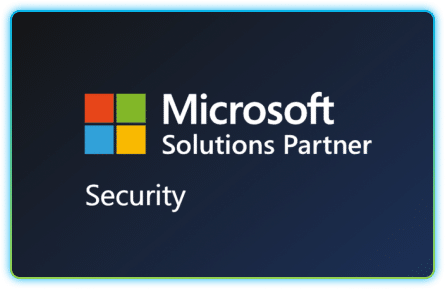24x7 Managed Cybersecurity Services from a Microsoft Full-Stack Security Partner
Managed Detection and Response service for mid-market organizations. Get a risk-free, 60-day trial.

Select a service and explore how we protect mid-market organizations from evolving cyber threats.
Microsoft Full-Stack Security Solution-as-a-Service
CyberMSI Security & Compliance Automation Solution

Identify
Endpoints
Data
Apps
Infrastructure
IoT
Network
CyberMSI’s Managed Cybersecurity Services
CyberMSI’s 24x7 Managed Detection and Response (MDR) service resolves cyberattacks with a 21-minute MTTR using Microsoft Defender XDR + Sentinel SIEM, powered by Microsoft Copilot for Security combined with insights from our cybersecurity experts.
We can detect and disrupt cross-domain cyberattacks using generative AI and advanced automation in a matter of minutes, not hours or days.
Let us amplify your IT and security teams’ impact with our managed detection and response service that protects endpoints, identities, networks, I/P/SaaS, and data using Microsoft threat intelligence, exposure, and vulnerability data.
Compare CyberMSI’s managed cybersecurity service features to others
| Features | CyberMSI | Others |
|---|---|---|
| 24x7x365 Managed Managed Detection and Response services powered by Gen AI + cybersecurity expert insights | ||
| Unlimited cyber threat monitoring, detection, investigation, containment and mitigation | ||
| 1-click, live Security Operations Center (SOC) cybersecurity analyst support | ||
| Identity Threat Detection and Response, Data Security, and Zero Trust Security | ||
| Full incident resolution with 60+ response actions on behalf of customers with a 30-minute SLA | ||
| L1-L3 threat containment with hands-on incident response in addition to AI-driven automated attack disruption | ||
| Automated and targeted advanced cyber threat hunting using threat intelligence | ||
| Identification and prioritization of exploited vulnerabilities in software, including end of support using Microsoft Exposure | ||
| Remediation guidance of attack surface maps in Microsoft Security Exposure Management (SEM) | ||
| Analysis and prioritization of guidance for Microsoft Vulnerability recommendations | ||
| Configuration guidance and recommendations for managing Microsoft Attack Surface Reduction (ASR) policies | ||
| Real-time customer visibility, co-management and analytics to enable continuous SOC improvements |
Why CyberMSI
Managed Cybersecurity Services
Managed detection and response service that combines generative AI with insights from our cybersecurity experts.
Trust and Transparency
Full transparency into our incident management process with access to real-time incident data through Microsoft Sentinel.
Priced for Mid-Market
Managed cybersecurity services priced for mid-market organizations, providing peace of mind and meeting budgetary needs.
24x7 Live SOC Support
Our SOC team is always available, ensuring immediate assistance from a cybersecurity expert familiar with your environment.
Cyber Threat Mitigation
21-minute MTTR from detection to mitigation, with a refund guarantee if we fail to meet contractual SLAs.
Cyber Risk Management
Weekly meetings with a dedicated account specialist to review KPIs and recommended cybersecurity improvements.












